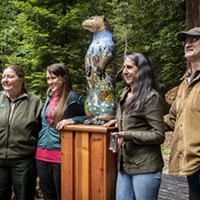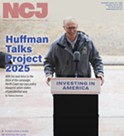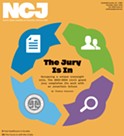'An Otter Idea'
Bold initiative looks to raise funds and awareness by merging art, science and a massive scavenger hunt
By Iridian Casarez [email protected][
{
"name": "Top Stories Video Pair",
"insertPoint": "7",
"component": "17087298",
"parentWrapperClass": "fdn-ads-inline-content-block",
"requiredCountToDisplay": "1"
}
]
After a long hike in England's Dartmoor National Park, Jeff Black and his wife stopped at Wayside Cafe. As they were sitting, drinking tea, they noticed scores of people coming in and out to take selfies with an otter sculpture.
Out of curiosity, they approached the sculpture and learned there were 99 others scattered throughout England as part of a scavenger hunt to promote the park's Moor Otters Art Initiative. The 3-foot sculpture was painted bright green with pink and blue flowers and wetland plants covering most of its body. Black was in awe.
"It captured my interest; it was like the otter's head was emerging from the plants," he said. "It was elegant and charismatic, standing on its hind legs, proud."
Black and his wife joined the hunt and spent the next week searching for otter sculptures around Dartmoor National Park. They ultimately found 30 and submitted their check-list brochure to be entered in a raffle. But others, Black said, had taken the hunt even further, finding all 100.
Black, a Humboldt State University wildlife professor who has overseen the River Otter Citizen Science Project since 1999, had just published the project's first 17 years of data in a scientific journal.
"Very few people look at those things," he said jokingly, adding that while in England he had a revelation to bring a similar project to five counties across the North Coast with the aim of raising awareness of — and funds for — his otter project.
"I was in reflection mode when I was on vacation in England, thinking, 'After 20 years [of the River Otter Citizen Science Project], how long am I going to continue this? Five years? Ten? Twenty? What am I going to do next?' And while I was in reflection mode, I stumbled on the Dartmoor otter project," Black said. "We [had participated in the scavenger hunt] for a week when I thought, 'Right! That's what I'll do.'"
Excited that he'd found a creative way to promote the River Otter Citizen Science Project, raise awareness about otters and their watersheds, and raise funds for monitoring and restoration efforts, Black took to telling people he'd had "an otter idea." Now with the help of HSU, Black's plan is hitting stride and the North Coast Otter Public Art Initiative will be in full swing, with education initiatives and cute otter art on display in businesses throughout the area.
Black is now looking for sponsors and hosts. Sponsors will finance an otter sculpture, paying about $750, with $150 going to the otter artist for supplies and materials. When all 100 otters are finished, they will each be placed in a business that will "host" it for the summer. Sponsors and hosts are different, Black stressed, explaining that sponsors will pay for the sculpture and stipend, and then, when the otter is finished, a small plaque with the sponsor's name will be attached to the otter. Hosts, on the other hand, will pay $500 to have an otter sculpture placed in their business, which Black said will attract more foot traffic from those participating in the scavenger hunt. At the end of next summer, all the otters will be auctioned off. Host businesses will not keep the otters unless they buy them for the upfront price of $5,000 — the "adoption option," which keeps their desired otters out of the auction catalog.
The 100 otter sculptures will be placed in businesses in Humboldt, Mendocino, Siskiyou, Del Norte and Trinity counties. People will then be encouraged to track them all down as a part of a scavenger hunt that will award prizes to those who find the highest number of the colorful sculptures.
The Moor Otters Art Initiative saw all 100 of its sculptures auctioned off and Black purchased "Bunty," his first choice of the 10 otter sculptures he was hoping to buy.
Bunty was the work of Maria Burns, a natural history illustrator based in England, who spent two weeks painting him and told Black she was excited her otter would be used to set up a California initiative. Bunty is blue with Cirl buntings — "a rare species of bird that were successfully brought back from the brink of extinction in Dartmoor," according to Burns — covering his body.
"I was amazed to find out that my otter was travelling to California (and a little jealous of him!)" Burns wrote in an email to the Journal. "I was even more delighted when professor Jeff Black contacted me to let me know he was using my otter to set up a whole new arts initiative. It is a lovely feeling to feel that my work is being used to inspire other artists and also raise awareness of Jeff's important otter studies. I couldn't have asked for a better home for him."
Black now uses Bunty to promote and recruit sponsors and hosts for the initiative, toting him to city council meetings, coffee shops and the Arcata Wildlife Sanctuary. The initiative, Black said, is an environmental education outreach program that includes an elementary school component and will teach the community about clean water and healthy habitats "where we live and play."
Black showed Bunty off to the Eureka City Council on March 19, asking the city to sponsor and host 10 otters. Rob Holmlund, the city's director of development services, found enough funding for four but Black still hopes he can inspire the council to find the money to sponsor the other six.
The city's otters align with its Strategic Art Plan to promote and incentivize visiting Eureka, Holmlund said. The otters will be placed in Eureka's Cultural Art District in Old Town — the Eureka Visitor Center will host one and city will hold a contest to place the other three in local businesses.
"The North Coast's only art district should have a strong representation and concentration in the otter project," Holmlund said.
Black's effort to recruit sponsors and hosts is off to a good start, he said, with organizations and businesses like the Arcata Marsh and Wildlife Sanctuary, Humboldt Bay National Wildlife Refuge, Los Bagels, Coast Central Credit Union, the McLean Foundation, 2nd Street Gallery in Crescent City and the Arcata Animal Hospital signing on to be sponsors, hosts or, in some cases, both. Arcata Animal Hospital is taking that a step further, pledging to sponsor, host and purchase an otter sculpture.
"I absolutely love otters," said Joy Fox Beaudet, the hospital's head veterinarian. "They're amazing little creatures that are fun to watch."
One day, while Fox-Beaudet was sitting near a river by herself, she said a family of four otters came near her. She said she felt excited but scared to move and recalled it as the "most magical moment of my life so far."
She read about Black's initiative in the Times-Standard and immediately wanted to be a part of it. She attended one of Black's presentations and spoke to him about participating. She said she is looking forward to hosting an otter that incorporates a wildlife phenomenon, jokingly adding that they need to be careful of placing a life-like otter in the hospital's office, as visiting animals might growl at it.
"I'm excited. This is a fun and exciting thing for people to be a part of and a great way for the hospital to be a part of the community," Fox-Beaudet said.
For nearly 20 years, Black has run the River Otter Citizen Science Project out of HSU's Wildlife Department. The project asks community members — citizen scientists — to record and submit basic information about otter sightings. Using that information, wildlife students and Black conduct more studies on river otters in the North Coast.
As an undergraduate at HSU, Alana Chin, formerly Alana Oldman, worked on a river otter study that was published in 2009. In an interview with the Journal, Chin, who now studies trees at the University of California at Davis, said it was her first independent research experience.
She and Black had wanted to learn how river otters on the North Coast use latrines (areas where otters urinate and defecate). They posed the question: "Do river otters use latrines as a form of official communication or for territorial purposes?" What they found was that (at least on the North Coast) river otters aren't territorial, as previously stated in other papers.
Chin and Black leaned heavily on the River Otter Citizen Science Project for their study, using it to determine the locations of latrines. They then took feces from local and foreign latrines and put it in various locations on top of dispersed sand to identify territorial behavior, expecting to see the otters exhibiting marking behavior "just like a dog peeing on top of another dog's urine," Chin said. But instead, the otters smelled the feces and rolled around in it, using it as a form of communication.
Chin said the study wouldn't have been possible without the citizen project sending in information about sightings, as she and Black wouldn't have been able to gather the data on their own.
"It's time-consuming," Chin said. "[Using citizen scientists] changed the ability to gather information."
Black said the concept allows scientists to sift through big data sets without having to fund the effort to collect them.
"I try not to ask too much [from citizen scientists], just relevant information like location, what otters are doing and how many there are," Black said.
Recently, Chin and Black worked on analyzing the behaviors of otters with the first 15 years of the River Otter Citizen Science Project data.
They both went through 3,880 entries by hand, gathering important information regarding behavior like group sizes in the presence of pups (baby otters) and how group size might affect the way otters forage for food. Chin and Black couldn't have completed either study without the information gathered by volunteer citizen scientists, she added. According to Black, there have been roughly 6,000 entries in the project's nearly 20-year span. Chin said she hopes the research paper will be published before the Otter Art Initiative next summer.
In addition to the value it brings to research, Chin said citizen science is also a great way to engage the public and teach the importance of clean water and habitats.
Alan Peterson, a photographer, videographer and volunteer otter spotter, said he started reporting sightings to Black's project in 2016.
"I love spending time with otters and interacting with them," said Peterson, who's also working on a film about otters, which he hopes to release before the initiative takes off next summer. "They swim up to me and do their thing; I've had a dozen encounters."
Seeing the way such projects can provide scientists with valuable data while also helping the public understand and appreciate nature, Chin said she has launched her own river otter citizen scientist project through American River College in Sacramento. It was inspired by Black, she said.
"It's sort of my hobby," she said.
While most see artists and scientists as operating in different spectrums, Black believes they are actually cut from the same cloth — filled with a sense of wonder while attempting to describe how we interpret the world.
Libby Maynard of the Ink People Center for the Arts is working closely with Black, aiding in the search for local artists to participate in the initiative, which Maynard said will be part of Ink People's North Coast Open Studios DreamMaker projects. A call for artists will be sent out next month and artists will be asked to submit sketches of their proposed sculptures. Black emphasized that there are no content limitations and said he is also seeking Native artists who are connected to rivers and watersheds in the area.
Maynard said it's a great opportunity.
"It combines art and science, and their creative process is the same, so it's just natural for them to come together," she said.
One local artist is already excited to be involved. Black approached Shawn Gould, a Humboldt County nature and wildlife painter who began illustrating science and natural history subjects 10 years ago for the National Geographic Society, Smithsonian Institute and National Audubon Society before deciding to focus exclusively on painting.
"I'm thrilled; it's going to be a lot of fun," Gould said. "I saw the otter sculpture from England. It looked great and I got excited to be a part of [the initiative]."
Gould is still brainstorming what he will paint on his otter sculpture — maybe birds or aquatic animals, but he hasn't nailed it down yet. Painting a sculpture is new territory for Gould, as he so far has only painted flat surfaces.
"It's going to be a process of discovery," Gould said. "I've never painted a sculpture and especially of that size. It's going to be a learning process, always."
In addition to raising awareness and creating a lot of whimsical otter art, England's Moor Otters Art Initiative raised a bunch of money. With the average winning auction bid for a sculpture coming in at $1,500 and all 100 otters sold, the project raised at least $150,000. Black said artists will decide if they want to take a 10 percent commission from their otter's auction bid. Black hopes the local initiative raises the same amount or more. Black specifically wants to devote some of the funds back to the watersheds in the form of internships for HSU students and would also like to support watershed projects from nonprofit organizations, like the Mad River Alliance.
Black is also looking to combine the Otter Art Initiative with Eco Day in the spring of 2020, tapping initiative leaders to raise awareness by going to local elementary schools to talk about otters and make otter art. The initiative will also create a junior ranger program during the summer, where kids will be able to pick up Otter Art Initiative activity books from areas like the Arcata Marsh Sanctuary or the Humboldt Bay Nature and Wildlife Refuge, complete them and return them for an official Otter Spotter badge.
Black is invigorated, excited about the merging of science and art, saying he wants to keep the River Otter Citizen Science Project going for as long as possible.
"This is a wonderful opportunity to celebrate what we have," he said. "A celebration of life and otters — it's something joyful to grasp onto next summer."
Speaking of...
-

Disaster Response, Crowley, Art in Piles and Salsas
Sep 7, 2023 -

A SoHum Otter Gets its Name
Jun 4, 2023 -

NCJ Preview: Otters, Cows, a Dark Theater and the Ritz
Mar 9, 2023 - More »
more from the author
-
An Upstream Intervention
Open Door hopes state grant will help address impacts of childhood trauma
- Feb 9, 2023
-
Humboldt County Still Working to Implement Organic Waste System
- Feb 2, 2023
-
Earl Robert Bootier: 1945-2022
- Jan 25, 2023
- More »
Latest in News
Readers also liked…
-
Through Mark Larson's Lens
A local photographer's favorite images of 2022 in Humboldt
- Jan 5, 2023
-
'To Celebrate Our Sovereignty'
Yurok Tribe to host gathering honoring 'ultimate river warrior' on the anniversary of the U.S. Supreme Court ruling that changed everything
- Jun 8, 2023

































